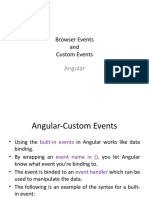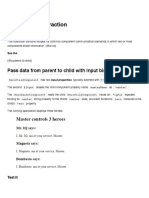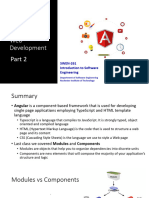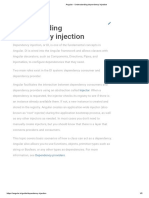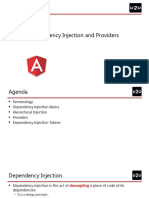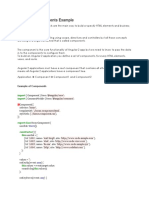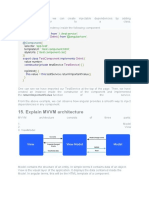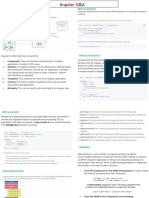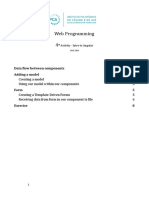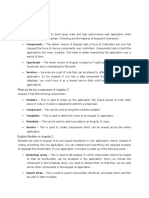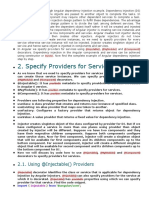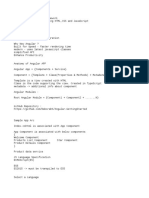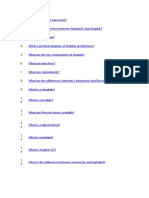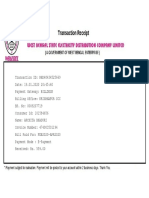0% found this document useful (0 votes)
54 views2 pagesAngular EventEmitter & DI Guide
The document describes how to implement communication between a child and parent component in Angular using an EventEmitter and @Output property. The child component emits data by calling the emitData() method, which passes the data to the EventEmitter. The parent component listens for this event using (dataEvent) and calls the receiveData() method to handle the emitted data. Dependency injection allows components and directives to inject dependencies like services, making their functionality available across the application.
Uploaded by
Camelia KumarCopyright
© © All Rights Reserved
We take content rights seriously. If you suspect this is your content, claim it here.
Available Formats
Download as DOCX, PDF, TXT or read online on Scribd
0% found this document useful (0 votes)
54 views2 pagesAngular EventEmitter & DI Guide
The document describes how to implement communication between a child and parent component in Angular using an EventEmitter and @Output property. The child component emits data by calling the emitData() method, which passes the data to the EventEmitter. The parent component listens for this event using (dataEvent) and calls the receiveData() method to handle the emitted data. Dependency injection allows components and directives to inject dependencies like services, making their functionality available across the application.
Uploaded by
Camelia KumarCopyright
© © All Rights Reserved
We take content rights seriously. If you suspect this is your content, claim it here.
Available Formats
Download as DOCX, PDF, TXT or read online on Scribd
/ 2

